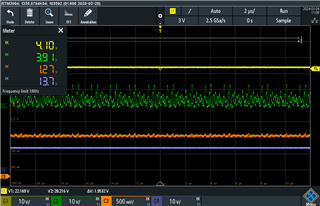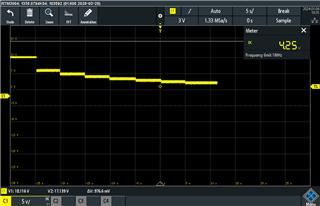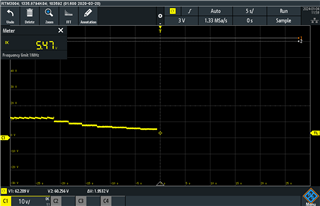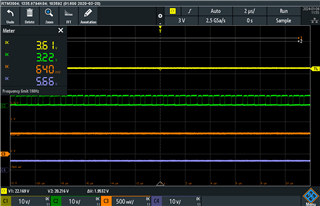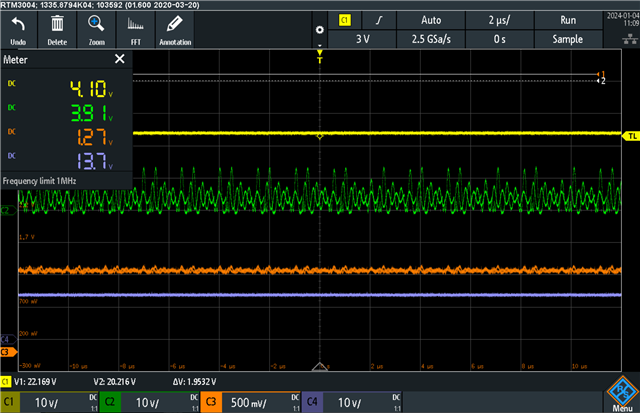Other Parts Discussed in Thread: LM2623, , TPS61089, TPS61288
Hi,
I am using LM2623 and LM2622 chips for step-ups in my design.
I designed it so I will use only one of them at a time.
I have checked both of them, and I have some slightly issues with the chips.
I attached the scheme for both of them
LM2622 -

The input voltage comes from R227 and is 3.9v.
The output voltage is programmed to 12V.
The measured voltage is at R225 pad (the resistor is disconnected to prevent issues).
And on the output is connected a digital load of 400mA.
I get ripples of 800mV -

Can you verify my schematics and tell me why do i have such high ripple on so low current consumption ? the chip suppose to support a 1.2A .
LM2623 -
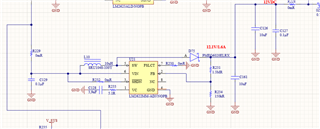
The input is the same. 3.9v. The output is measured on R228. the output load is 370mA
And i am getting those 1v ripples -
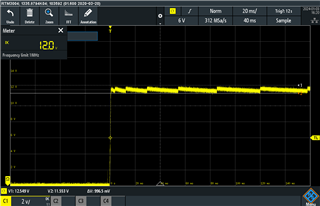
i want to ask you to verify my schematics and maybe help me with the issues above
thank you,
Michael
PS. i just saw that the pictured are not very clear. i want to attach a pdf with the schematic so it will be easier for you.
i cannot attach pdf here. if you want a pdf i will mail you the pdf
thanks


